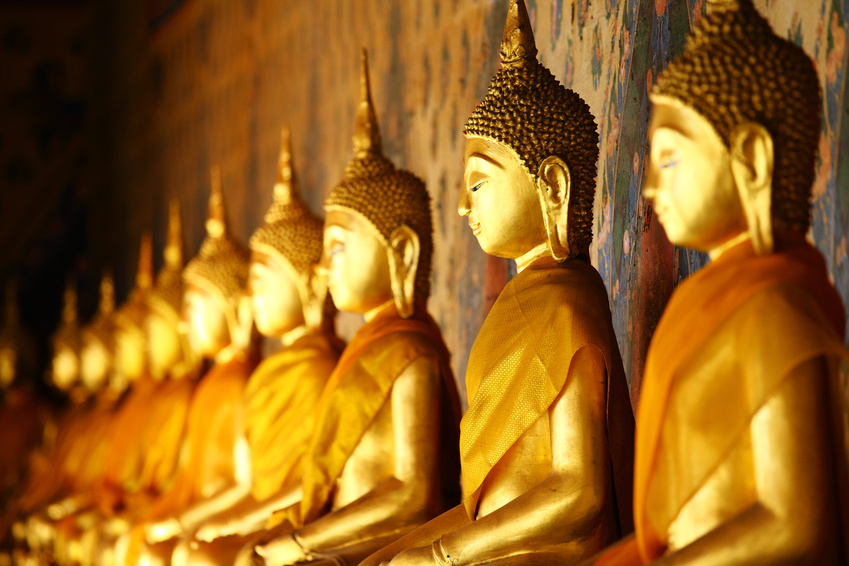
Sukhothai of Thailand and The Fascinating Stories of It's Rich History
This section is about the history of Sukhothai.
Sukhothai Kingdom in the northern part of Thailand away from Bangkok, Sukhothai is 430 kilometers from Bangkok, The Kingdom of Sukhothai was one of the first independent Thai Kingdoms and is famed for its unique and distinctive architecture. The Sukhothai period is also noted for its diverse and rich culture.
Sukhothai was the center of power in Thailand for a short period, from about 1238 to 1438 CE. It was established by King Si Inthrathit, who is widely regarded as one of Thailand's most important historical figures. He ruled from 1279 to 1298 CE.
The Kingdom of Sukhothai was a key player in the history of Thailand, as it was the first Thai kingdom to be established and unify the country.
The Kingdom of Sukhothai was established by King Si Inthrathit in 1238, who emerged victorious from a series of wars with neighboring kingdoms. The kingdom's name means "dawn of happiness" or "dawn of prosperity".
Sukhothai and its rich History
Sukhothai is a historic city in Thailand. It was the capital of the Kingdom of Siam from 1238 to 1438. The city is located on the banks of the Chao Phraya River, about 800 kilometers north-northwest of Bangkok.
The city is famous for its well-preserved, 13th century Buddhist temples, including Wat Mahathat and Wat Ratchaburana. These temples are some of Thailand's most important historical sites and they were designated a UNESCO World Heritage Site in 1991. The area around Sukhothai was first populated by people from the Mon-Khmer speaking communities, who moved into what are now Myanmar and Thailand around 1500 BC.
Sukhothai is located in the north of Thailand and it is one of the most important archaeological sites in Southeast Asia.
The town was founded by King Si Inthrathit in 1238 and was a center for the new Thai kingdom. In 1257, Sukhothai became a vassal state of the Mongol Empire, but regained its independence about 20 years later.
Sukhothai was a prosperous trading city with a population of around 100,000 inhabitants. It had large markets with many shops and traders as well as many temples and palaces.
The Kingdom of Sukhothai lasted for 150 years before being conquered by Ayutthaya in 1378.
A brief history of The Golden Age of Sukhothai
The Kingdom of Sukhothai was the first independent Thai kingdom, founded in 1238. It was also the center of Buddhism in Thailand before it was replaced by Ayutthaya.
This is a brief history of The Golden Age Of Sukhothai.
The Golden Age of Sukhothai was a period in Thai history, from the 13th to 14th century, during which the kingdom was at its height. The age is so called because of the prosperity and peace brought by King Ram Khamhaeng.
The Kingdom of Sukhothai was founded in 1238 by King Si Inthrathit after he inherited his father's kingdom following a bloody succession struggle. He had been crowned king by a Brahmin priest in 1237 and had been ruling only for about six months before he decided to go on campaign against the neighboring state of Lanna (modern day Chiang Mai). The campaign succeeded and as a result, King Ram Khamhaeng's influence expanded over larger areas along Thailand's northern frontier.
An example of a Thai Buddha Image in the style of Sukhothai
The wat mahathat is a Buddhist temple in the city of Sukhothai, Thailand. The wat phra mahathat chao khor kaeo wihan is a stupa located within the wat mahathat complex.
This example shows how an artist has taken a Thai Buddha image and created their own style of Sukhothai by using the same colors and pattern as seen in other examples of this style.
In the Sukhothai period, King Ramathibodi I built Wat Mahathat to be the center of Buddhist life in his new capital. The temple is divided into three sections: the outer, middle and inner zones.
The outer zone contains a large seated Buddha statue and smaller Sukhothai-style Buddha statues, as well as a number of stucco reliefs depicting scenes from the life of Buddha.
The middle zone has a cruciform shaped building with four entrances leading to a central courtyard with four small seated Buddhas on each side. The inner zone is enclosed by walls and contains two seated Buddhas and other minor buildings such as libraries.






